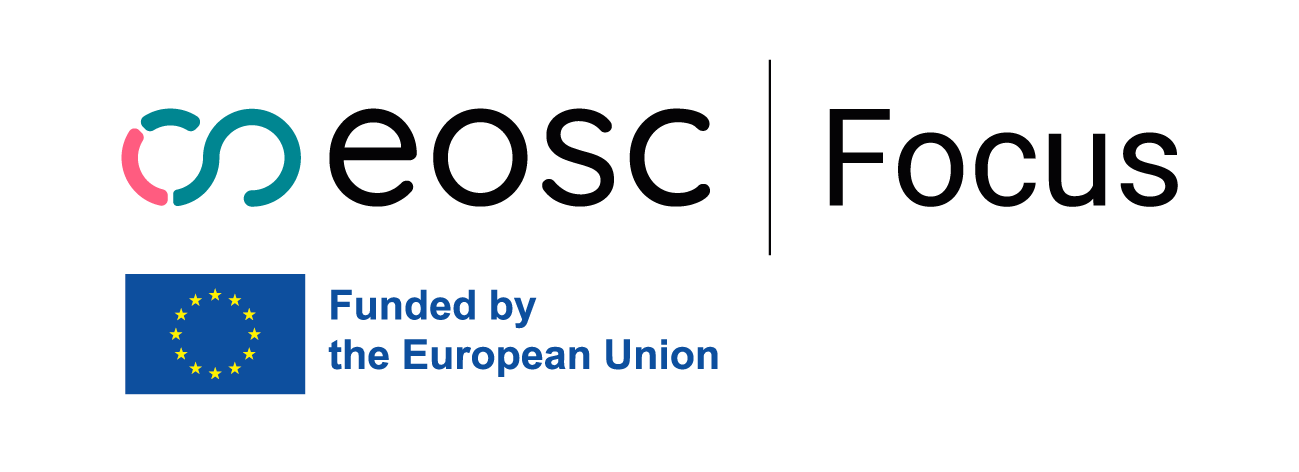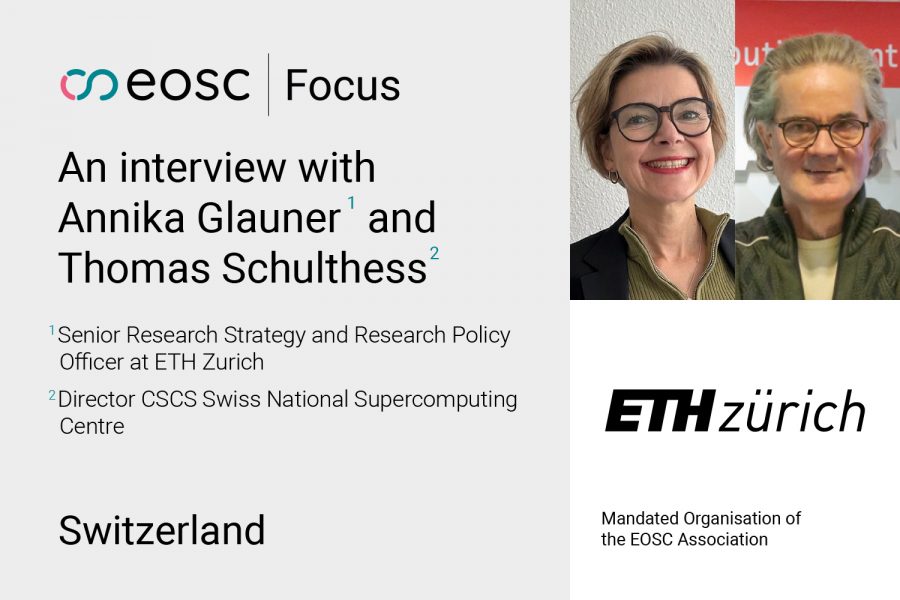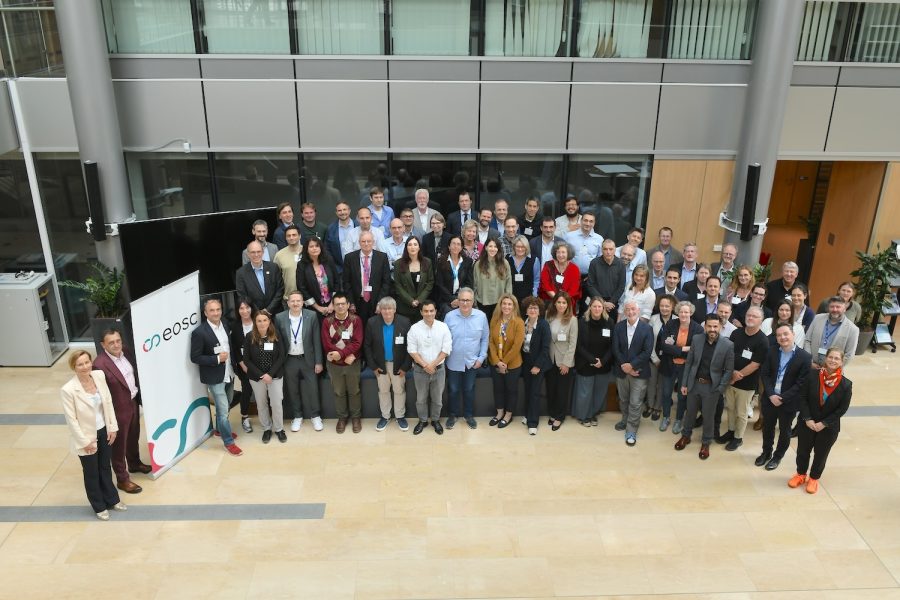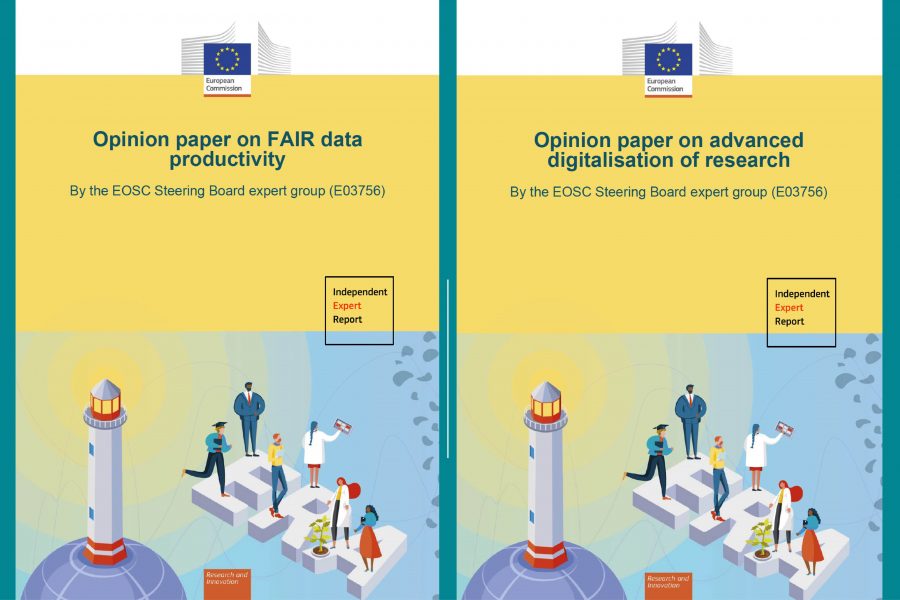This interview is part of a series coordinated by the EOSC Focus project. The interviews aim to highlight the role of the EOSC Association’s Mandated Organisations. By bringing their activities and insights to the forefront, the EOSC Focus interviews will help to reinforce the connections between each country’s Mandated Organisation and its EOSC Association member and observer organisations, as well as to make visible the work going into the implementation of EOSC at the national and institutional levels.
Kaori Otsu, CREAF, EOSC Focus Researcher, and Isabel Caetano, EOSC-A Senior Stakeholder Engagement and Outreach Officer, interviewed Isabel Diaz, Deputy Vice-President of Internationalisation and Cooperation at The Spanish National Research Council (CSIC), one of the four founding members of the EOSC Association and EOSC-A’s Spanish Mandated Organisation. In this wide-ranging interview Isabel shares her views about CSIC’s, and Spain’s strategy, goals, national discussions, engagement activities, policies, and funding in relation to EOSC, and her vision for EOSC post-2027.
How do you see the role of your organisation as one of the four founding members of EOSC-A, and as the Spanish Mandated Organisation?
We as the National Research Council (CSIC) are the EOSC-A Mandated Organisation appointed by the Spanish Ministry of Science and Innovation (MICINN). When we took this role, we agreed to lead the coordination and make the Spanish research community dynamic. Then we designed a coordination plan based on monthly meetings with all the Spanish members and observers of EOSC-A, and based on engagement with other scientific communities through the national structure for Open Science, the Spanish Network for e-Science (REeC). The Spanish research community has the potential to be very active and well-represented in EOSC-A as we have numerous institutions, drawing on diverse research topics, that may be interested in becoming members.
How do your organisational strategy and goals reflect your engagement in EOSC?
We are trying to create our “mini-EOSC” in the CSIC to mobilise different actors and researchers among the 124 institutes and 14,000 employees in our organisation. So far, we have established an internal working group using our resources across research areas – Humanity and Social Sciences, Geomining, Ocean, Brain, Biotechnology, Environment, and Biodiversity. The working group currently has 10 representatives and will continue to include new data infrastructures from other research areas.
Even at the national level we are also creating a mini-EOSC by stimulating the Spanish community to align their goals with EOSC’s. This effort has materialised in adding new Spanish members to EOSC-A so that our bottom-up approach, driven by researchers, can complement EOSC’s top-down approach to meet somewhere in between.
How do you translate EOSC’s European and international developments into national discussions?
Our strategy to link into EOSC’s development is to be more active in EOSC funding calls, but the opportunities are limited. We can join other established groups that are already preparing proposals as a consortium partner, but we find it difficult to establish a consortium as a coordinator of EOSC projects. Currently, some other countries are much more advanced than Spain for research calls in the global scenario. We are seeking more opportunities to collaborate with those countries for the integration of our new activities into their already-established community.
Which engagement activities has CSIC facilitated to enhance the EOSC ecosystem?
Mainly we have facilitated the EOSC National Tripartite Events to stimulate the community and engage them. We also hold monthly meetings, which is a coordination mechanism we put in place to evaluate the events. We go through the results – what went well, what went wrong, and what we can improve on next time.
Additionally, given the complexity of our organisation, we are planning to launch an internal survey for data capacity and storage capacity that could be linked to EOSC. The delivery of the survey results is expected in spring 2024.
How do you identify the most relevant national policies for Open Science and EOSC?
The Spanish government has approved the first National Open Science Strategy (ENCA) 2023-2027. With ENCA advanced by the European Research Area (ERA) Policy Agenda, including the implementation of EOSC, we can encourage our ministry to connect to EOSC. This is the natural way to link EOSC to our new Open Science Strategy, which will capitalise Spanish institutions.
We at CSIC have had our own Institutional Mandate for Open Science issued in 2019, which addresses our repositories and structure for publishing data with open access. This is a chain of the Open Science structure that extends from the institutional level to the national level and to EOSC.
What funding sources are available, and which are still needed to develop EOSC in Spain?
The Spanish Ministry of Science and Innovation (MICINN) is currently revising and preparing a new State Plan of Scientific and Technical Research and Innovation (PEICTI) for the next three years (2024-2027), which will prioritise EOSC and Open Science for new funding calls. Additionally, we have opened discussions among national organisations and the MICINN on how to establish an office for Open Science.
What are Spain’s main strengths and areas for improvement in its efforts to develop EOSC?
We are active and committed to EOSC’s development with strong national representation. We also contribute research content from a very large scientific community, which already has available data, as demonstrated by the recent Spanish National Tripartite Event on 19 September in Madrid.
On the other hand, the majority of those representatives at the National Tripartite Event were not in attendance at the EOSC Symposium hosted in Madrid in the same week. The take-home message was to improve the connection from our national community to the EOSC community. Although we will continue to drive the Spanish community towards the global community, we need to show at the same time that there is an opportunity for them in the EOSC scenario.
Are there any challenges identified for EOSC development in Spain?
Despite all we have in the form of stimulation, motivation, commitment, and scientific data, we lack funding sources to anchor these to our national agenda for EOSC development. Our community cannot go much further in its ambitions without anchored funds, which are fundamental to advance to the next level. This became clear during the EOSC Symposium where we saw other national initiatives with large funding resources to enable the advancement of EOSC.
What are some use cases and good practices that demonstrate EOSC’s impact?
The recent oceanographic data presentation at the September National Tripartite Event by Susana Diez Tagarro from the Marine Technology Unit of the Spanish Research Council (UTM-CSIC) was reported to EOSC-A as a good practice.
The Spatial Data Infrastructure of the UTM-CSIC Data Centre consists of several Data Discovery & Access Services, such as the Oceanographic Cruise and Data Catalogue, the Geoportal, different Data Viewers, and a Data Repository, where more than half the data are open.
Following FAIR principles, this national infrastructure is connected to other marine infrastructures at European level, mainly EMODnet and SeaDataNet. Through the federation of marine data and data services, data from UTM-CSIC Data Centre can be found and is accessible from Blue-Cloud EOSC.
What are the projects or initiatives in which CSIC or other Spanish stakeholders are participating that you consider strategic?
COARA is our main strategic initiative that we are active in, with a new internal working group to develop activities in alignment with the ENCA. We are also involved in European Partnerships through CSIC’s coordination of the AI4EOSC project and participation in other EOSC-related projects by Spanish stakeholders. Another EOSC-related project, EOSC4Cancer, is coordinated by EOSC-A member, the Barcelona Supercomputing Center (BSC), which is the Spanish national supercomputing facility participating as Hosting Entity for the EuroHPC Joint Undertaking. CSIC also has a new strategy to build a data lake at the CSIC level for computing science that facilitates all HPCs. This could coalesce with EOSC in near future.
What are your main motivations for being a member of EOSC-A?
Because we do believe in EOSC. We believed in Open Science even before EOSC existed, for example, our institutional commitment to Open Access since 2006.
For us to continue with EOSC, the current situation in Spain requires more support and effort by the Spanish Ministry. This is why it is important to increase Spanish members of EOSC-A and to strengthen the EOSC community in Spain so that the Ministry will hear our needs.
What is your vision for EOSC post-2027, and how do you promote contributions by CSIC to materialise it?
First of all, for us there will be Open Science no matter what, with or without EOSC. Whatever we contribute to EOSC now will continue to be used under Open Science. That’s what encourages us to work for the development of EOSC.
Currently, we at CSIC are not yet visible enough in the EOSC ecosystem, considering that we are very active in Open Science and data management with good practices to showcase our activities in Europe. We are also proud of our researchers taking the lead in collaborating with the Global South, in South America, Africa, and southeast Asia. Again, this is why we believe in the bottom-up approach because that’s how we represent CSIC as a Mandated Organisation. Given our research excellence in Europe, we will promote such contributions to increase our visibility in EOSC’s development, including in future EOSC projects.
| About CSIC The Spanish National Research Council (CSIC) is the largest public research institution in Spain and one of the most renowned institutions in the European Research Area (ERA). It is affiliated to the Ministry of Science and Innovation through the Secretary General for Research. Read more about CSIC |  |
| About Isabel Diaz Dr Isabel Díaz was appointed Deputy Vice-president of International Cooperation of CSIC in June 2022. Her unit handles the strategy of large international infrastructures at CSIC, as well as strategies to reinforce international cooperation with Africa and Latin America, and the Caribbean. Isabel Díaz got her PhD in Chemistry in 2001 from UAM with an Extraordinary Doctorate Award, with research stints at the University of St. Andrews (UK), Lund University (Sweden), and Tohoku University (Japan) to specialise in Transmission Electron Microscopy. She was a Fulbright Fellow at the University of Massachusetts and the University of Minnesota between 2002 and 2003. She is currently a Senior Researcher at Instituto de Catálisis y Petroleoquímica, ICP-CSIC in Madrid, Spain. She is also Adjunct Professor at the Chemistry Department of Addis Ababa University, Ethiopia, where she was recruited as Full Professor for six years (2010-2016). She broadened her profile getting involved in Gender Equality activities including leader of the Gender Equality Unit at ICP-CSIC, coordinator (2021) of the network of the Gender Equality Unit CSIC Institutes at the UAM Campus in Madrid (10 centres). She was also external advisor of the Women in Science Unity of the Ministry of Science and Innovation (MICIN). |  |






